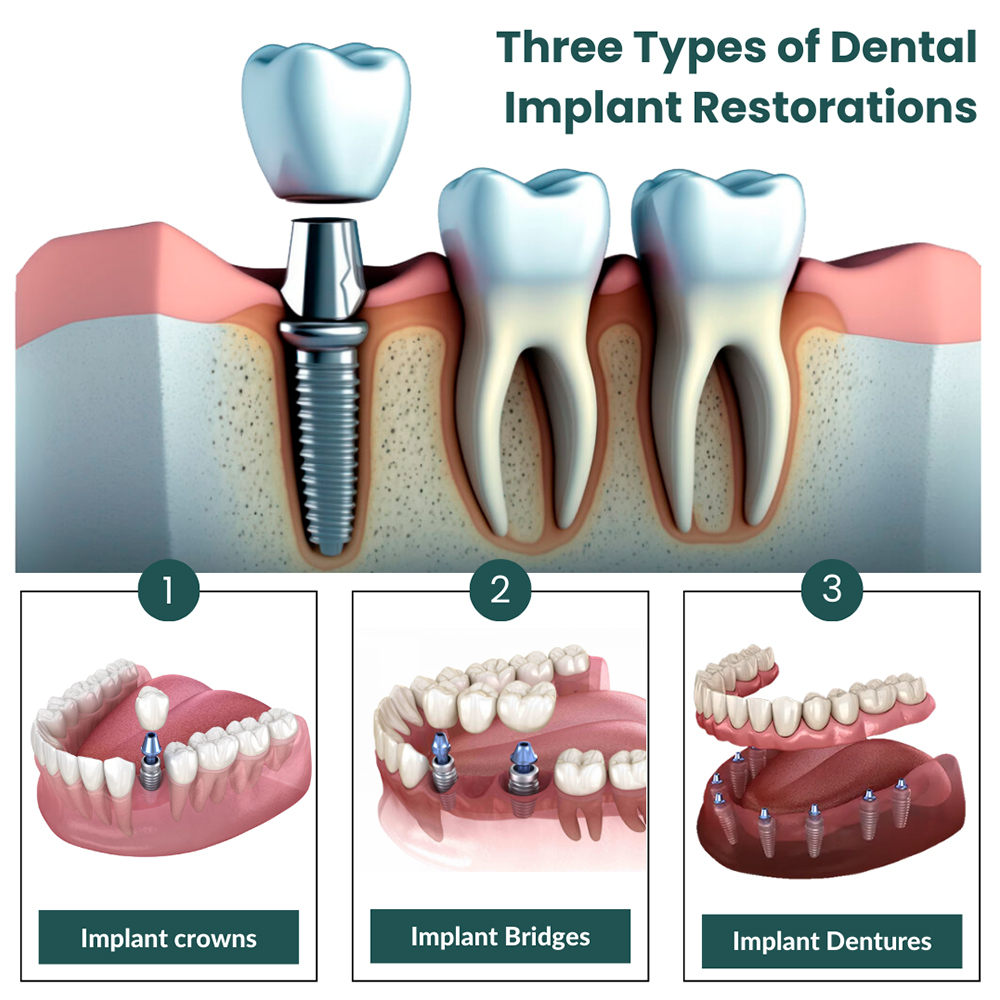Some Ideas on Dental Sense You Should Know
Table of ContentsDental Sense - TruthsDental Sense Can Be Fun For AnyoneDental Sense Fundamentals ExplainedSome Known Details About Dental Sense
are medical devices surgically implanted right into the jaw to bring back an individual's capability to chew or their look. They supply assistance for fabricated (fake) teeth, such as crowns, bridges, or dentures. When a tooth is shed because of injury or illness, a person can experience issues such as quick bone loss, malfunctioning speech, or adjustments to eating patterns that cause pain.Oral implant systems include an oral implant body and oral implant joint and may also include an abutment addiction screw. Professional teeth whitening. The dental implant body is surgically placed in the jawbone in location of the tooth's origin. The dental implant joint is generally connected to the dental implant body by the abutment addiction screw and expands with gum tissues into the mouth to support the connected man-made teeth
(https://profile.hatena.ne.jp/dentalsense1/)Structure of The Oral Implant System choosing dental implants, speak to your oral supplier regarding the possible benefits and dangers, and whether you are a prospect for the treatment. Things to consider: Your total health is a vital consider identifying whether you are a great candidate for dental implants, how much time it will require to heal, and the length of time the dental implant might stay in area.
Smoking may influence the healing procedure and lower the lasting success of the implant. The healing procedure for the implant body might take numerous months or longer, during which time you normally have a short-term joint in area of the tooth. the dental implant treatment: Carefully adhere to the dental health directions given to you by your oral company.
The 10-Second Trick For Dental Sense
Implant failure can cause the need for another procedure to deal with or change the implant system. Restores the capacity to eat Restores aesthetic look Aids keep the jawbone from shrinking as a result of bone loss Protects the health and wellness of the surrounding bone and gums Helps maintain surrounding (nearby) teeth stable Improves quality of life Damage to surrounding all-natural teeth throughout dental implant positioning Injury to the surrounding tissues during surgical procedure, such as sinus opening Injury during surgical treatment (for instance, fracture of bordering jawbone) Insufficient function, such as feeling like the teeth do not attack with each other normally An experience that the tooth hangs or turning in area resulting from an abutment screw loosening up Implant body failing (looseness of the dental implant body) due to systemic infection, which may be most likely in clients with uncontrolled diabetes as a result of regional infection in bone and gums supporting the implant body due to delayed healing, which may be more probable in people that smoke Problem cleaning up the periodontals around the dental implant, causing bad oral health Neglected periodontal condition Post-surgical numbness as a result of nerve impingement or damage Always notify health care carriers and imaging professionals that you have dental implants before any kind of magnetic resonance imaging (MRI) or x-ray treatments.
FDA is not knowledgeable about any kind of adverse occasions reported for MRI or x-ray procedures with dental implants. Dental implants systems are normally made from materials that follow global consensus criteria of the International Organization for Standardization (ISO) or ASTM International. These criteria have information of what makes a safe material.

A dental implant is a framework that changes a missing tooth. With screw-like gadgets, the cosmetic surgeon inserts a dental implant into the jawbone, and it acts as a support for a fabricated tooth, called a crown. A tool called an abutment links the man-made tooth to the dental implant. The crown is custom-made to fit the person's mouth and match the color of their teeth.
5 Easy Facts About Dental Sense Shown
Some people are not eligible for oral implant surgery. It is for oral surgeons to operate people with: acute illnessuncontrollable metabolic diseasebone or soft cells disease or infectionIf these concerns are dealt with, an individual can have the surgery. web link In, dental surgeons refrain from running on people with: If people with any one of the above undergo dental implant surgical procedure, there is a higher threat of the implant falling short.

Oral dental implant surgery is an individualized process. Offer you time to heal. Attach the message and last crown, bridge or denture.
Next, your cosmetic surgeon will very carefully put the dental implant into your jaw. Ultimately, your surgeon will rearrange your periodontals and shut the incision with stitches. If your dental implant is near the front of your mouth, your dental professional will make a short-term tooth for you to use up until you recover. In this way, you won't have a gap in your smile while you recuperate.
Things about Dental Sense
During the recovery stage, your jawbone must fuse to the oral implant. This process can take anywhere from three to nine months.
Once your dental implant heals, your dentist can affix the joint (small adapter post) and your final reconstruction (crown, bridge or denture). This usually takes about one hour to finish and may call for a 2nd minor surgical treatment. You should not really feel any discomfort throughout your dental implant treatment since your company will utilize drug to numb your periodontals.